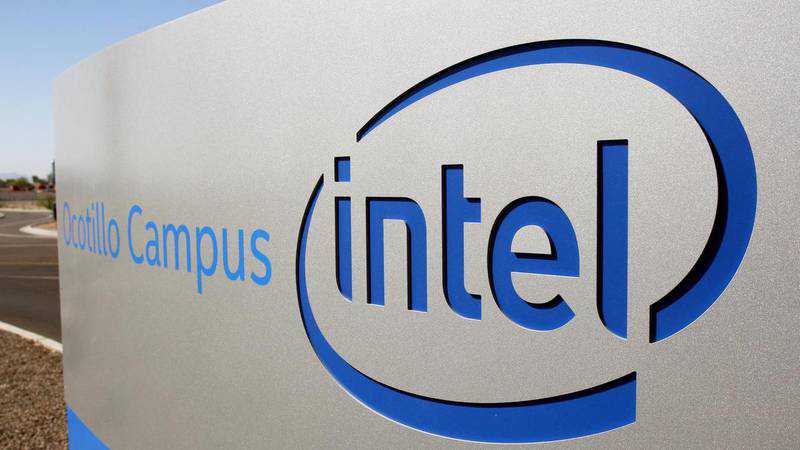Intel profits up but revenue falls below expectations

Intel reported a 60 per cent jump in its third-quarter net profit on strong demand for semiconductors globally, but revenue fell short of Wall Street expectations.
The company's stock plunged about 9 per cent in extended trading on Thursday.
The world's largest chip maker by revenue saw net profit for the quarter ending September 25 reach $6.8 billion, $2.5bn more than the same quarter last year. Revenue surged 5 per cent on an annualised basis to $19.2bn, the company said in a statement.
“Q3 shone an even greater spotlight on the global demand for semiconductors, where Intel has the unique breadth and scale to lead,” Intel chief executive Pat Gelsinger said.
“We broke ground on new fabs [fabrications – the process of making chips], shared our accelerated path to regain process performance leadership and unveiled our most dramatic architectural innovations in a decade,” said Mr Gelsinger.
In the July-September period, the California-based company generated $9.9bn in cash from operations and paid dividends of $1.4bn.
Intel said it expects fourth-quarter sales to reach about $19.2bn and full-year revenue to hover around $77.7bn.
It expects the full financial year’s capital expenditure to range between $18bn and $19bn and a free cash flow of $12.5bn.
In the third quarter, Intel spent more than $3.8bn on research and development activities, about 16 per cent more than the R&D spend of the same period last year.
Its operating income surged nearly 3.3 per cent yearly to $5.2bn in the quarter.
Since Intel’s founding in 1968, it has been an integrated device manufacturer (IDM) — a company that both designs and builds its own semiconductor chips.
In March, Mr Gelsinger announced IDM2.0, a new model that includes significant manufacturing expansions.
This year, Intel announced it would invest $20bn to build two factories in Arizona to challenge the growing dominance of other manufacturers such as Taiwan Semiconductor Manufacturing Company and Samsung Electronics.
“Our focus on execution continued as we started delivering on our IDM 2.0 commitments … we are still in the early stages of our journey, but I see the enormous opportunity ahead,” said Mr Gelsinger.
The company, which employs 117,200 employees globally, has more than $7.8bn in cash and cash equivalents as of September 25.
Its client computing group (CCG), which produces chips for personal computers, added $9.7bn in overall sales in the third quarter — almost 2 per cent less than the same period last year. The CCG, which is Intel’s largest business division, was down due to lower notebook volumes due to industry-wide component shortages, the company said.
The company earned $6.5bn from making chips for data centres, nearly 10 per cent up on a year-on-year basis.
Its Internet of Things group, which manufactures low-power embeddable chips, earned more than $1bn, almost 54 per cent more than the prior year period.
Sales of Intel’s autonomous driving subsidiary Mobileye were up about 40 per cent to $326m in the three-month period.
Semiconductor chips are particularly important components for electric and self-driving vehicles. They are used to manage features such as navigation and parking sensors as well as to monitor engine performance.
In April, Mr Gelsinger said the company plans to manufacture in-demand semiconductors for cars to alleviate the shortage that has hobbled the industry worldwide.
In a recent interview with CNBC, Mr Gelsinger said he didn’t expect the semiconductor shortage to end until 2023.
“We’re in the worst of it now, every quarter next year we’ll get incrementally better, but they’re not going to have supply-demand balance until 2023,” he said.
Previous Story
- Smartphone Maker And Apple Supplier Foxconn, Joins The...
- Tesla posts record profit on increased vehicle deliveries
- Ex-Apple designer Jony Ive to help Ferrari make...
- Auto PLI scheme gives right impetus to the...
- Newark electric customers offered free energy assessment
- China plans to merge electric vehicle companies in...
- Biden launches EV push with unions, auto industry
- Electric Cars Are Splitting The Automobile Industry In...